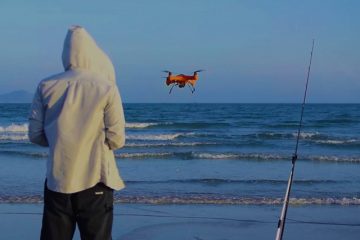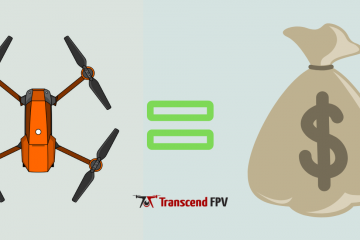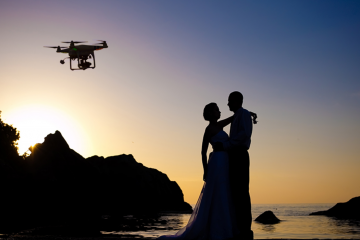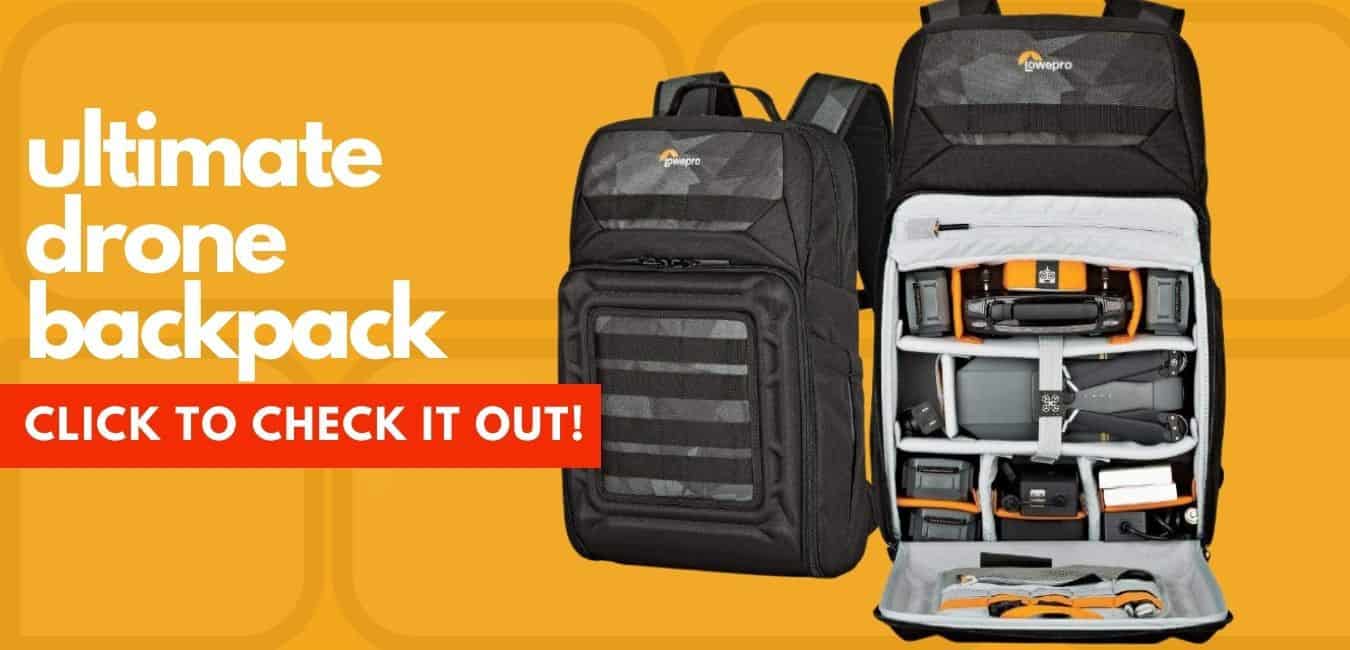Can I Fly My Drone In The Rain + Best Drone for Bad Weather
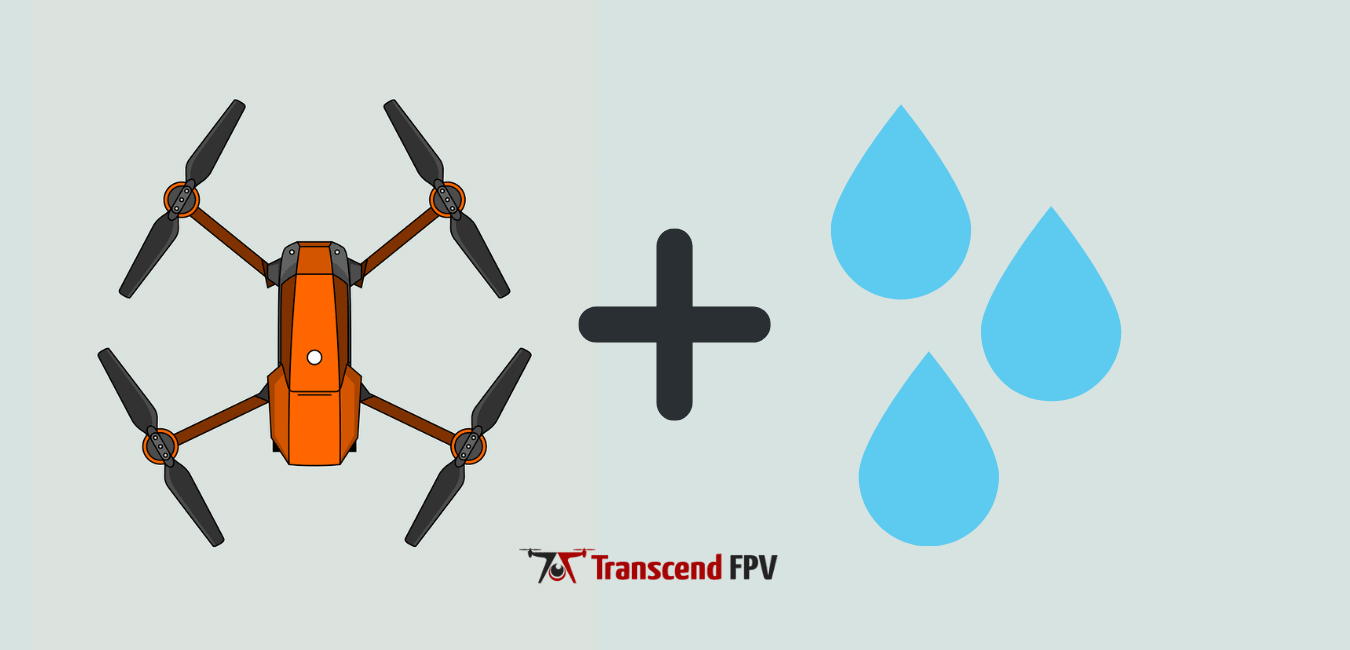
TranscendFPV is a reader supported product and review site. Clicking on links to learn more, or buy products, may earn us money, and support our work. Learn more about the history of TranscendFPV and our passion on our About page.
It’s finally the weekend and I want to get outside and fly my drone. One little problem: it’s going to be raining all day! I am not even sure if I can fly my drone in the rain so I did some research and what I found was surprising.
In general, you cannot fly drones in the rain because they are not built to be either waterproof or water resistant. Exposed and unprotected motors and electrical components make most drones susceptible to water damage. Some drones, however, are built specifically for applications where waterproofing or, at the very least, some resistance to water is necessary.
[sc name=”aff-snippet” ]
Quick Links
Can drones fly in the rain?
Whether or not your particular drone can fly in the rain depends on what drone you purchased and if you have taken any measures to waterproof your drone.
Most drones cannot fly in the rain simply due to the fact that they have exposed motors and electrical components that are sensitive to moisture. Electronics and water just don’t mix.
Some drone manufacturers have built drones capable of handling varying levels of moisture based on their application.
For example, fishing drones like the Swellpro Splash 3 is built to be completely waterproof as the chances of your drone taking a swim while fishing are much higher. Most of the fishing drones on this list will have some level of waterproofing.
Other drones are built with varying levels of water resistance which are usually provided in the form of an IP (Ingress Protection) rating. I’ll explain more about IP ratings later in this post.
Can you fly a DJI drone in the rain?
Please don’t! Almost all of the DJI drones are neither waterproof or water resistant.
So, intentionally flying your DJI drone in the rain will most likely break the thing and they are not cheap so keep them inside when it’s raining or snowing.
DJI does offer some water resistant models like the Matrice 200 and the Agras but they are definitely not waterproof so don’t land them in your pool.
You could also follow some of our guide on waterproofing your drone but unless your drone is built by the manufacturer as waterproof, you are really only adding some peace of mind that your drone may better survive an encounter with water.
Can you fly a drone when it’s snowing?
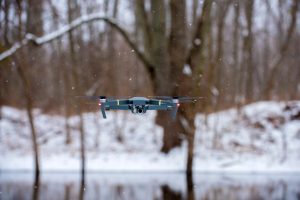
So we are all in agreement that unless your drone is specifically waterproof, flying your drone in the rain is a big no-no. But what about flying a drone when it’s snowing?
Let’s think back to elementary school science class. Snow is ice. Ice is frozen water. When ice melts, it becomes liquid water that wreaks havoc on all of your drone’s electronics.
So, the answer is still no. You cannot fly a drone when it’s snowing outside. The good news is that your drone is more likely to survive a freak snow storm as opposed to a pop-up rain shower.
There’s nothing stopping you from flying your drone while there is snow on the ground, just make sure you have a dry, snow-free place to land.
Are drones waterproof?
As mentioned multiple times above, most drones are not waterproof. Most drones aren’t even water resistant.
It takes a lot of work to make electronics waterproof and for most consumer drones, it is just not necessary.
Some applications for drones do require a waterproof drone like drone fishing and some commercial applications. In these cases, most drones are rated with an IP rating, or Ingress Protection rating.
An IP rating consists of the letters “IP”, then two numbers and an optional third letter. An IP rating classifies the amount of protection the drone has against solid objects, dust, and water among other things.
For example, IP43 would be a drone with level 4 protection against solid particles and level 3 against liquid.
The first number refers to the level of protection against solids and the second number refers to the level of protection against liquids.
For our purposes (ie. waterproofing), we are only really concerned with the second number. Here is a break down of the different levels of water protection:
| Level | Protection |
|---|---|
| 0 | No protection at all |
| 1 | Protection against vertically falling drops of water (ie. directly above the drone with no tilt) |
| 2 | Protection against water dropping at up to 15 degree angle |
| 3 | Protection against water spraying at up to 60 degree angle |
| 4 | Protection against water spraying from all directions |
| 5 | Protection against lower pressure jets of water from all directions |
| 6 | Protection against powerful jets of water from all directions |
| 7 | Protection against full immersion in water up to 1 meter deep for 30 minutes |
| 8 | Protection against long periods of full immersion in water |
| 9 | Protection from close range, powerful, high temperature jets of water |
So as you can see from the IP ratings table above, it isn’t until at least level 7 that I would consider a drone “waterproof”. When looking at waterproof drones, make sure to try to find an IP rating so that you know exactly how much water abuse it is rated for.
What happens if my drone gets wet?
Buy a new one! (just kidding)
In all seriousness, if your drone gets wet, you will need to follow all the same procedures you might follow if your phone gets wet (except for heavens sake do not put your drone in a bag of rice in the fridge…)
First things first, unplug the power supply/battery.
Try to gently shake free any excess water. You can even use a keyboard duster or hair dryer (on cool) to blow off some excess water.
Then you need to just set aside your drone in a warm, dry area and let it dry for at least 48 hours. Make sure it is completely dry before plugging back in the battery and trying to power it up.
If it fails to power on, remove the battery immediately and take it to a local drone repair technician to assess the damage.
What happens if my drone is struck by lightning?
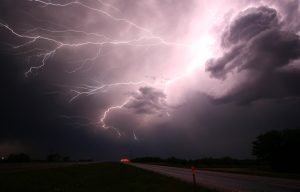
Buy a lottery ticket because that is extremely lucky (or unlucky I guess…).
Seriously though, after reading this article, you know you can’t fly your drone in the rain so the chances of lightning striking your drone are astronomically low.
But if we are just playing the “what if” game, then your drone will most likely experience total and catastrophic failure.
Everything will be fried and your drone will drop out of the sky like a ton of bricks beyond repair.
If this does happen to you though, I would find a nice place over the fireplace to hang the lightning charred drone because it would be a great conversation piece with a hell of a story!
What is the best drone for bad weather?
There are still some legitimate use cases for flying a drone in the rain. Perhaps you are a filmmaker and want to film in a storm to create some ultra dramatic footage. Maybe you are an avid drone fisherman and you need your drone to perform rain or shine.
What is there on the market today for you? The best drone for bad weather is definitely the Swellpro Splash 3.
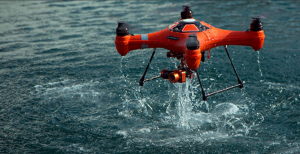
It is built completely waterproof for hardcore drone fishing! You can’t get much more weatherproof than that.
Even if you are not into drone fishing, it has more than impressive video quality and you’ll be able to fly your drone in the rain with little to no worries for many storms to come.
If you already have a drone and want to fly it in the rain, you could try some of the tips in our drone waterproofing guide, but I cannot guarantee your drone will survive any amount of water.
Fly your drone in the rain at your own risk or better yet, spend those rainy days flying on a drone simulator instead and still get that practice in!
